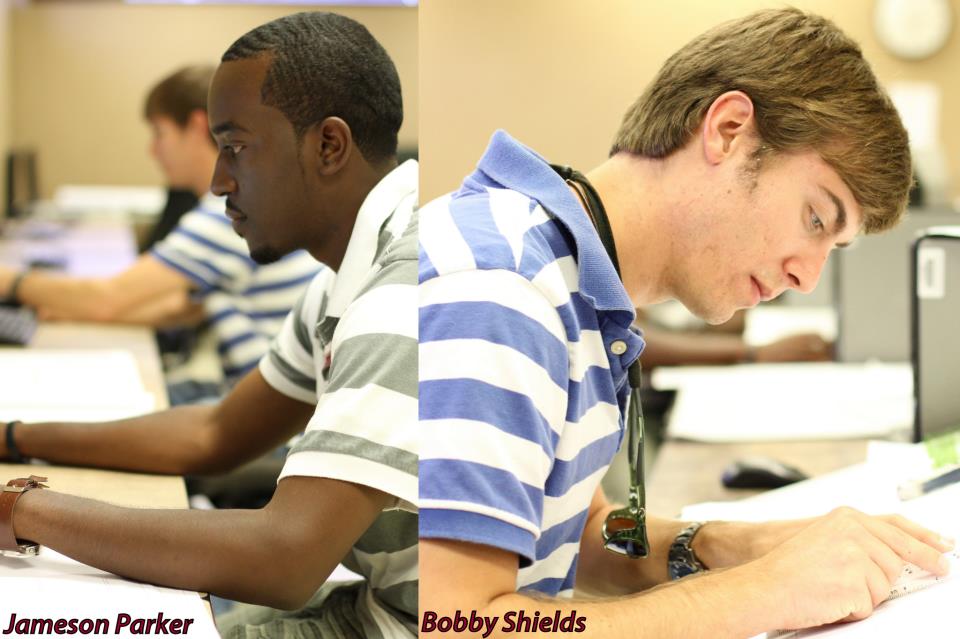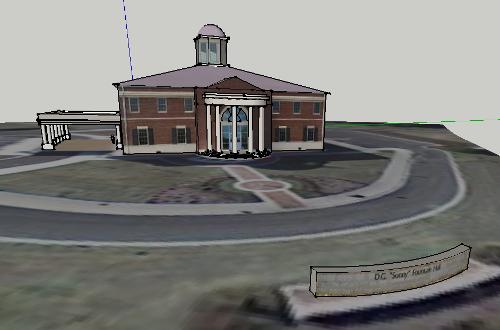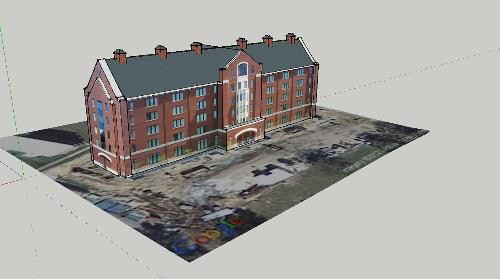
DESIGN YOUR FUTURE: EXPLORE THE POSSIBILITIES!
I was thinking…..what do you want to be when you grow up? What about a career in architectural engineering? Let’s take a moment of your time to explore this option that is available to you in the Drafting and Design Technology cluster programs and see if it might be a “good fit” for your skills and career goals. Architectural CAD technicians are drafters who use computer-aided design (CAD) systems to prepare detailed drawings of residential and commercial buildings that are used by those responsible for its construction. They work closely with an architect to ensure that the drawings accurately reflect what the architect envisioned. An architectural CAD technican may draw plans for the foundations of structures as well as lay out the interior rooms of buildings. They are expected to study building codes, site requirements and other documentation to determine any impact on building plans. Visits to building sites to collect data and monitor compliance with design requirements may also be part of the job. Every day, architectural CAD technicians are expected to be able to visualize how things come together and can be organized. They need to think through problems and come up with general rules. It is also important that they see details at a very fine level of focus. And finally, they sometimes have to ready cost estimates, contracts, bidding documents and technical summaries for specific projects under an architect's supervision
Where do Architectural CAD Technicians Work?
Architectural CAD technicians, otherwise known as drafters, are usually employed by architectural firms and construction companies. Architectural CAD technicians often have a specialty in a specific field, much as engineers do. They may specialize in commercial HVAC, plumbing or electrical divisions of construction companies as well as by materials used such as steel, wood or reinforced concrete. Their work is mainly done on the computer using industry standard software such as AutoCAD, Architectural Desktop and REVIT to name a few. Successful architectural CAD technicians have a solid understanding of mathematics and science.
What are some of the day to day duties in this field?
-
Design commercial and residential plans using computer aided design software
-
Work from rough drafts created by architects to produce detailed drawings
-
Use their knowledge of building materials and techniques to add details to architectural plans
-
Pay attention to scale
-
Proof drawings
-
Prepare multiple versions of design plans for architects to review
-
Work under the supervision of architects
Possess these qualities - this might be the career for you!
-
Critical thinking skills. Architectural CAD technicians must be able to identify and solve problems as they relate to architectural design.
-
Detail oriented. Architectural CAD technicians have to pay careful attention to detail to ensure the plans area technically accurate.
-
Interpersonal skills. Architectural CAD technicians must be able to take constructive criticism from architects, engineers and clients as well as articulate their concerns about a project.
-
Math skills. Working with detailed commercial and residential plans require the architectural CAD technician to solve mathematical calculations involving angles, weights and costs to name a few.
-
Technical skills. Architectural CAD technicians must be proficient in the most up to date computer software such as REVIT, REVIT BIM (building information modeling) and PDM (product data management)
-
Time management skills. Architectural CAD technicians must be able to work efficiently under strict deadlines

HCC BECOMES AUTOCAD TESTING CENTER
REVIT IMPLEMENTED IN COURSEWORK
STUDENTS FEATURED IN GOOGLE 3D WAREHOUSE WITH BLUE RIBBON STATUS
The Drafting and Design Department on the Raymond Campus of Hinds Community College has undertaken an ongoing student project to develop the campus in 3D. Stu-dents enrolled in advanced classes have been creating photorealistic 3D models using Google Sketchup (a popular 3D modeling tool) and submitting them one by one to Google’s 3D Warehouse.
Graduates, Bobby Shields and Jameson Parker sub-mitted 3D models of Fountain Hall, Riggs-Virden Hall and Allen-Dukes-Whitaker Hall. All three buildings were accepted to Google Earth with Fountain and Riggs-Virden being awarded Blue Ribbon Status. A link to Hinds Community College Drafting and Design page in Google Earth may be found on the Departments page of the program. In addition the Drafting and Design Department on the Raymond Campus has partnered with Certiport to provide Autodesk certification exams in their class-room and certify student design software skills. AutoCAD Certified User certification validates students have acquired the necessary skills to continue their design careers. Currently they have over an 80 percent passage rate for students who have taken advantage of this opportunity. For more information concerning this program contact Phil Cockrell at 601.857.3422 (pcockrell@hindscc.edu) or Cindy West at 601.857.3486 (ciswest@hindscc.edu)


